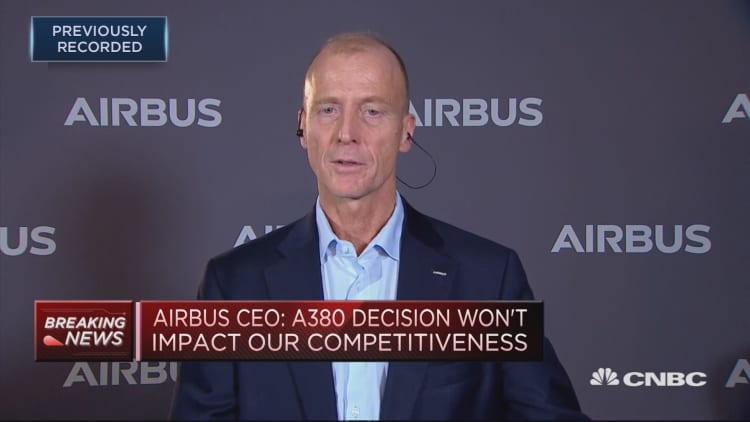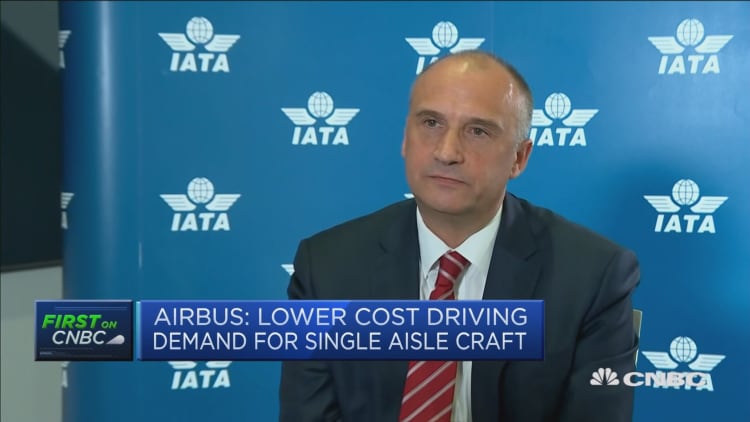The European plane maker Airbus announced an end to its A380 superjumbo program, just 12 years after it first took to the skies.
The future of the world's largest commercial jet-liner had long been in doubt after it became clear that it was heavily reliant on just one customer, the Middle East airline Emirates.
CNBC takes a look at the plane that was built to revolutionize air travel, but found that the skies had already moved on.
The business case
Built as a direct response to Boeing's 747, the A380 program was officially launched in June 1994. The European plane was seen as a big bet that air travel would become "hub and spoke," where large planes would carry out the first long leg to big airports before passengers would splinter off to their final destination in smaller jets.

While Boeing's 747-8 can carry around 470 passengers, the A380 holds at least 500 and has been configured by Emirates to carry as many as 600.
The plane's huge number of seats was seen as key in helping to free up the air traffic overcrowding at several big airports such as London's Heathrow, New York's JFK and Chicago's O'Hare.
Each plane is priced publicly at around $445 million although airlines negotiate steep discounts.
The plane takes to the skies
The A380 is mainly built in a 1.6-million-square-foot assembly plant at Airbus' headquarters in Toulouse.
The very first version to fly took off from Toulouse in April 2005 and was first used commercially by Singapore Airlines in October 2007, flying between Singapore and Sydney.
British Airways, Air France, Emirates and Air China have all been among the A380's 13 different carriers although no U.S., South American or African airline has ever placed an order.
Customer feedback was positive as additional space, walk-up bars, and a quiet ride all pleased flyers. Airlines found they could charge a small premium on tickets as customers hunted for routes using the superjumbo.
What went wrong?
Airbus' Global Market Forecast from the year 2000 predicted that 1,235 "very large aircraft" would be delivered to customers between 2000 and 2019. But as of January 2019, Airbus had received 313 firm orders and delivered just 234 aircraft.
The firm's lofty target was swiftly undermined by the arrival of more fuel-friendly offerings such as Airbus's own A350 or Boeing's 787 Dreamliner.
The smaller aircraft were lighter and could be run more efficiently as the expectation of a steep rise in passenger travel failed to materialize. It was also found that very few routes could operate the A380 at full capacity.
Timing does seem to have been a problem. As the A380 hit the world's runways, a worldwide liberalization of flight routes known as "Open Skies" was underway. This allowed airlines to downsize their planes and fly more regularly.
Added to that is the rise of the ultra long-haul flight. Airlines have asked both Boeing and Airbus to come up with planes that can haul passengers from one side of the world without stopping.
Freighter future?
Boeing's 747 has just celebrated 50 years in the air. Demand for that plane has also dipped sharply but it has found a new role as a freighter.
But a cargo version of the A380 is seen as unworkable for one reason — it is too big. The plane would reach maximum payload long before it's actually full. One estimate is that an A380 could carry 60 percent more volume than a 747 but only 28 percent more weight, thereby making it inefficient.



